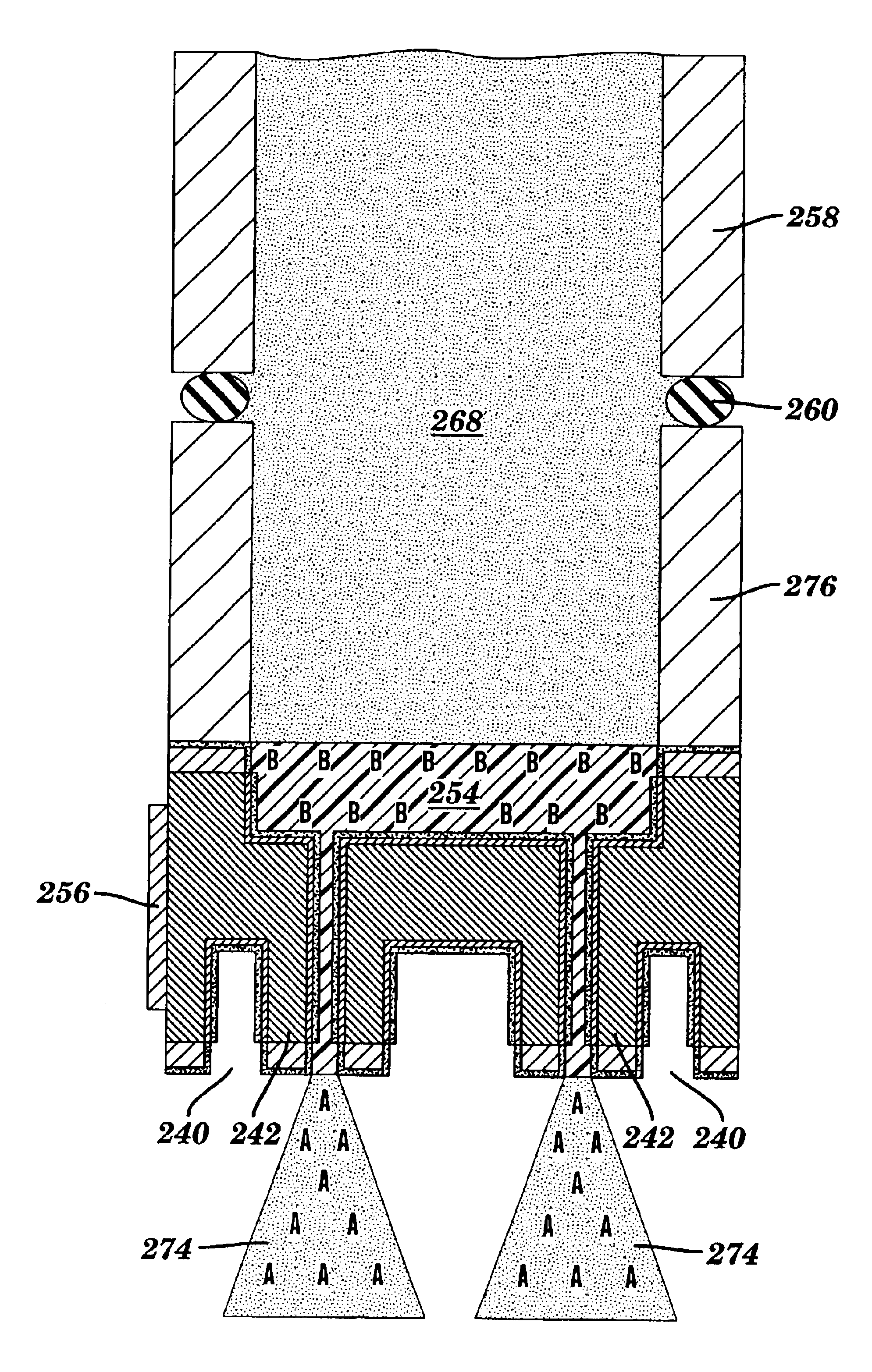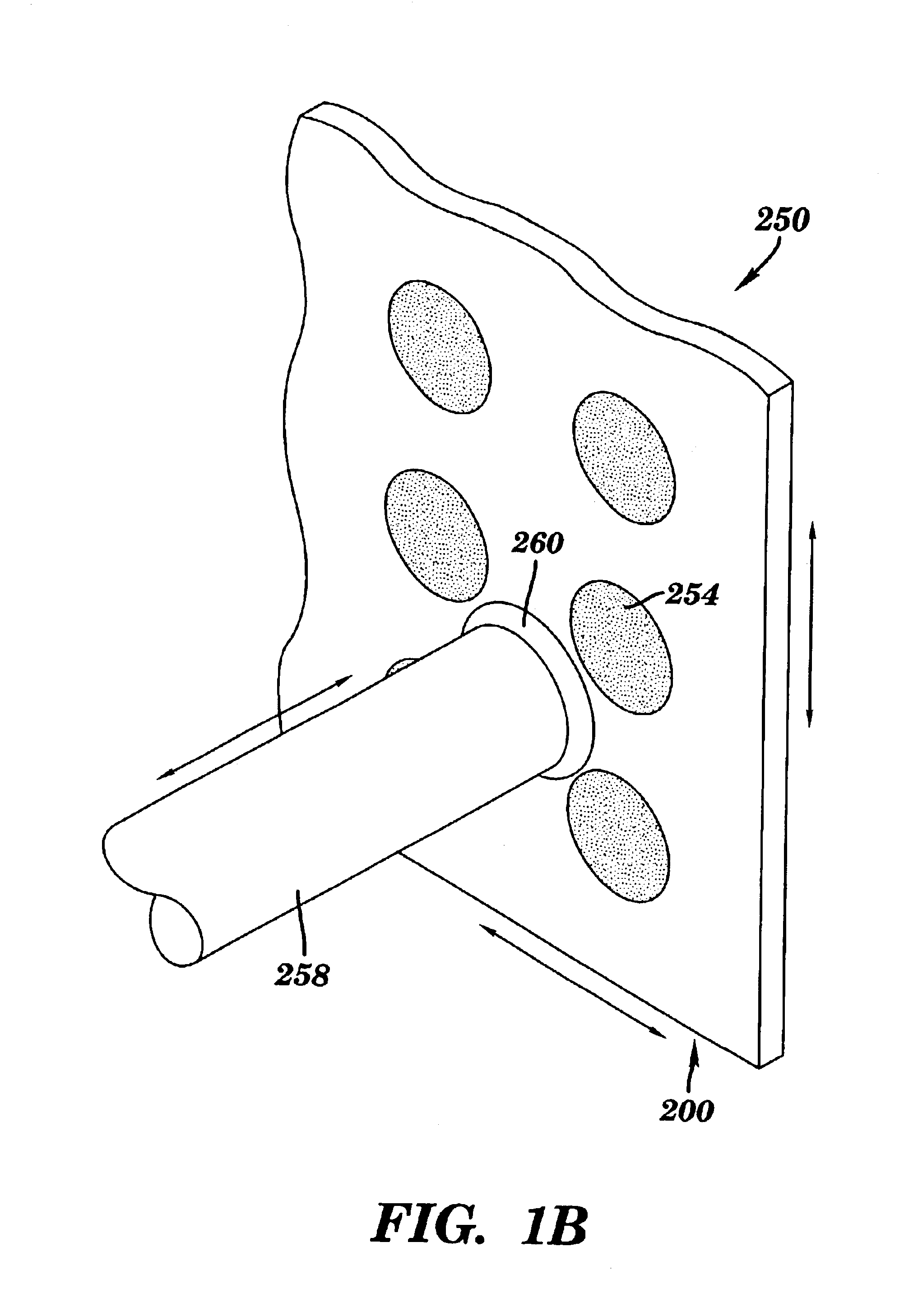Separation media, multiple electrospray nozzle system and method
a fluidic system and electrospray technology, applied in the direction of electrostatic separation, particle separator tube details, fluorescence/phosphorescence, etc., can solve the problems of inability to use an lc column with these small particles, limited lc pump availability, etc., to increase the mass spectral sensitivity of microfluidics, increase the useful fluid flow rate range, and increase the flow rate
- Summary
- Abstract
- Description
- Claims
- Application Information
AI Technical Summary
Benefits of technology
Problems solved by technology
Method used
Image
Examples
Embodiment Construction
[0129]Control of the electric field at the tip of a nozzle is an important component for successful generation of an electrospray for microfluidic microchip-based systems. This invention provides sufficient control and definition of the electric field in and around a nozzle microfabricated from a monolithic silicon substrate for the formation of multiple electrospray plumes from closely positioned nozzles. The present nozzle system is fabricated using Micro-ElectroMechanical System (“MEMS”) fabrication technologies designed to micromachine 3-dimensional features from a silicon substrate. MEMS technology, in particular, deep reactive ion etching (“DRIE”), enables etching of the small vertical features required for the formation of micrometer dimension surfaces in the form of a nozzle for successful nanoelectrospray of fluids. Insulating layers of silicon dioxide and silicon nitride are also used for independent application of an electric field surrounding the nozzle, preferably by ap...
PUM
| Property | Measurement | Unit |
|---|---|---|
| Electrical resistance | aaaaa | aaaaa |
Abstract
Description
Claims
Application Information
 Login to View More
Login to View More - R&D
- Intellectual Property
- Life Sciences
- Materials
- Tech Scout
- Unparalleled Data Quality
- Higher Quality Content
- 60% Fewer Hallucinations
Browse by: Latest US Patents, China's latest patents, Technical Efficacy Thesaurus, Application Domain, Technology Topic, Popular Technical Reports.
© 2025 PatSnap. All rights reserved.Legal|Privacy policy|Modern Slavery Act Transparency Statement|Sitemap|About US| Contact US: help@patsnap.com



